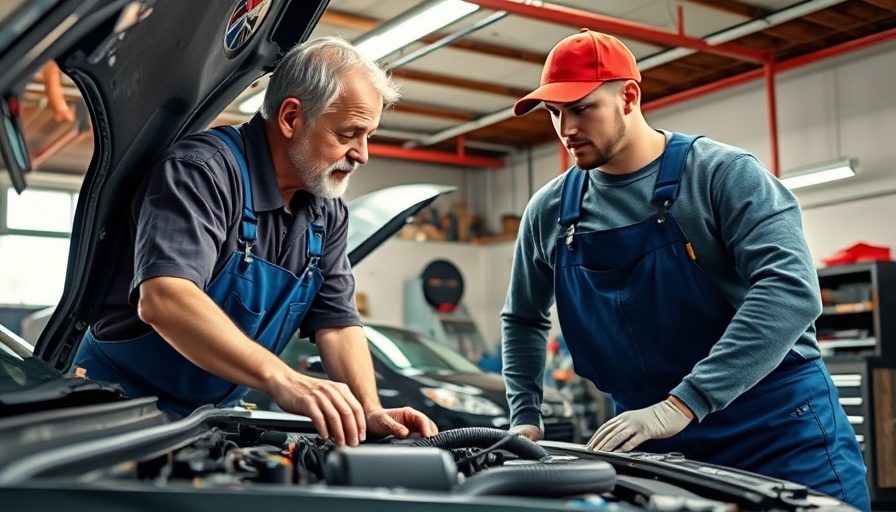
Understanding the Financial Impact of Car Repairs
When faced with unexpected car repairs, it's easy to feel overwhelmed. Not only can the financial burden disrupt your routine, but the urgency to get back on the road can lead to hasty decisions. Whether it’s a straightforward repair or a significant overhaul, understanding financing options is crucial. The automotive industry is becoming increasingly complex, with electric and hybrid vehicles requiring specialized attention and often resulting in greater costs. Let’s explore some practical financing solutions that can help ease this financial strain.
Auto Repair Loans: A Viable Lifeline
One of the most straightforward options for funding car repairs is through auto repair loans. These personal loans are specifically designated for vehicle repairs, offering flexibility in repayment terms and amounts. As Matthew Wilde notes, some lenders can provide funds almost immediately after application, while others may take longer. It's essential to compare lenders and understand their qualifications, often revolving around your credit history and income levels. For those with a credit score of 670 or higher, securing such financing can lead to decisions that relieve the immediate burden of repair costs—a critical factor when time is of the essence.
Using Credit Cards Wisely
Credit cards offer a quick solution for paying for repairs, but they come with potential pitfalls. High Annual Percentage Rates (APRs) can lead to escalating debt if balances aren’t paid promptly. However, by leveraging existing credit lines, especially with offers of 0% APR for a limited time, you can effectively finance repairs without accruing interest. This strategy requires careful management and timely payments to avoid falling back into a high-interest cycle once the promotional period ends. Considering interactions with car dealership financing options can also provide additional avenues to explore in tandem.
Mechanic Financing: A Convenient Yet Cautionary Choice
Some automotive repair shops offer financing options directly through partnerships with lenders. While this might seem convenient, it’s wise to explore whether these terms are as favorable as those offered by traditional lenders. Independent shops might present tempting payment plans or even limited-time offers like 0% APR cards, which can add an emotional appeal for those needing immediate repairs. Analyze the overall costs and conditions before signing any agreements, as some might entail hidden fees or high-interest rates over time.
Family Loans: The Personal Approach
Turning to family for loan assistance can be a delicate yet effective route. This option offers the benefit of potentially lower interest rates—or even 0%—though it comes with emotional stakes. Clear communication is essential. Establishing repayment terms and expectations upfront can maintain healthy relationships amongst family members while providing the necessary financial support during difficult times. It’s a pragmatic solution that, while potentially awkward, can be manageable with the right approach.
What to Consider Before Making a Financing Decision
Before committing to any lending option, it’s vital to consider several factors: the total funding amount required, your current financial situation, and the implications of each option on your credit score. By checking your credit score beforehand, you can align your options more realistically, narrowing down the choices based on your financial health. For instance, if you have a beloved classic car needing repairs, you may have to explore specialized loans that cater specifically to vintage vehicles rather than conventional options.
Protecting Your Finances: Insights from Automotive Experts
Understanding the varying financing options goes beyond immediate needs; it provides a framework for long-term financial health. Automotive industry insiders often emphasize the importance of budgeting for unexpected repairs as part of overall vehicle maintenance. From expert automotive technician insights to dealership strategies, learning from those who navigate the market daily can lead to smarter financial choices in times of stress. Those with existing automotive maintenance knowledge can limit their costs by advocating for transparent pricing and comprehensive evaluations before authorizing repairs.
In conclusion, navigating auto repairs requires not just technical knowledge but a thorough understanding of available financial tools. Whether considering auto repair loans, leveraging credit cards, seeking mechanic financing, or turning to family, being informed about your best options can facilitate a smoother path back to the road.
Take control of your automotive repair financing by exploring these options today. Understanding and using your resources wisely can get you on the road without derailing your financial stability.
 Add Row
Add Row  Add
Add 




Write A Comment